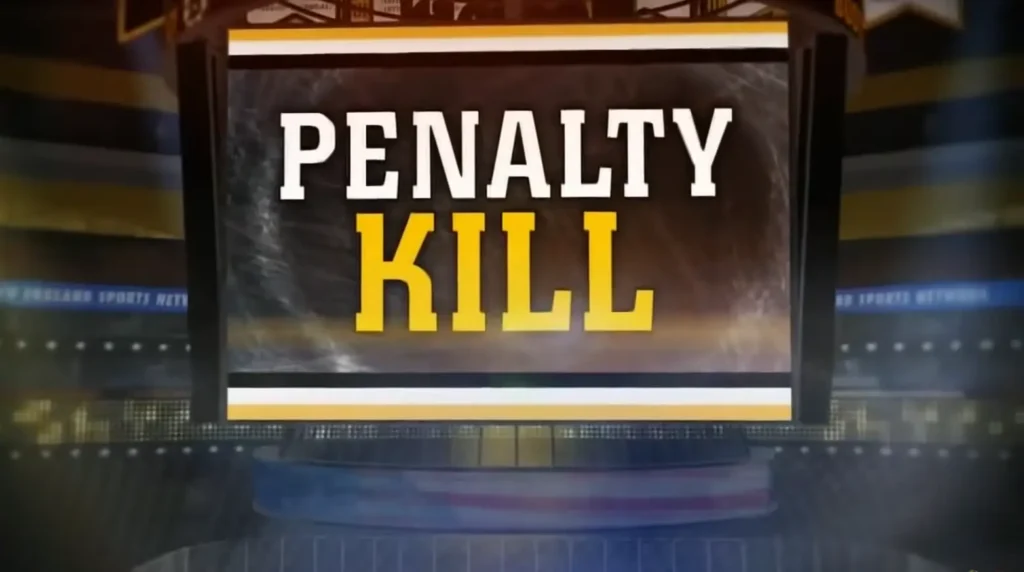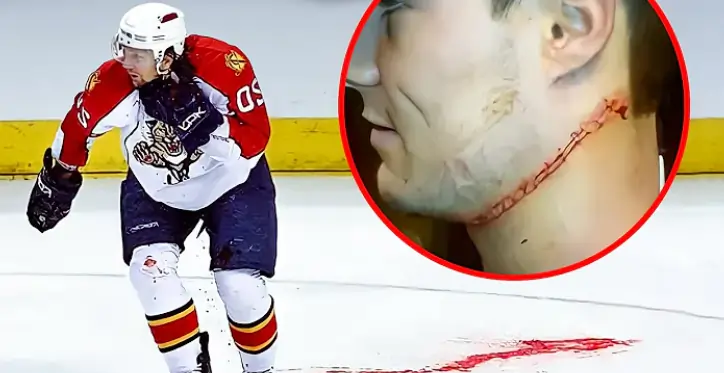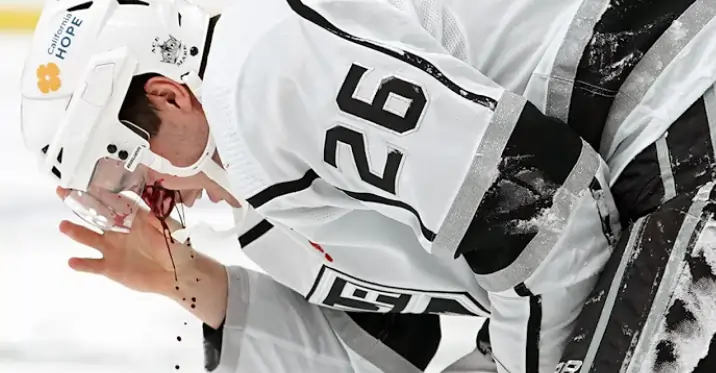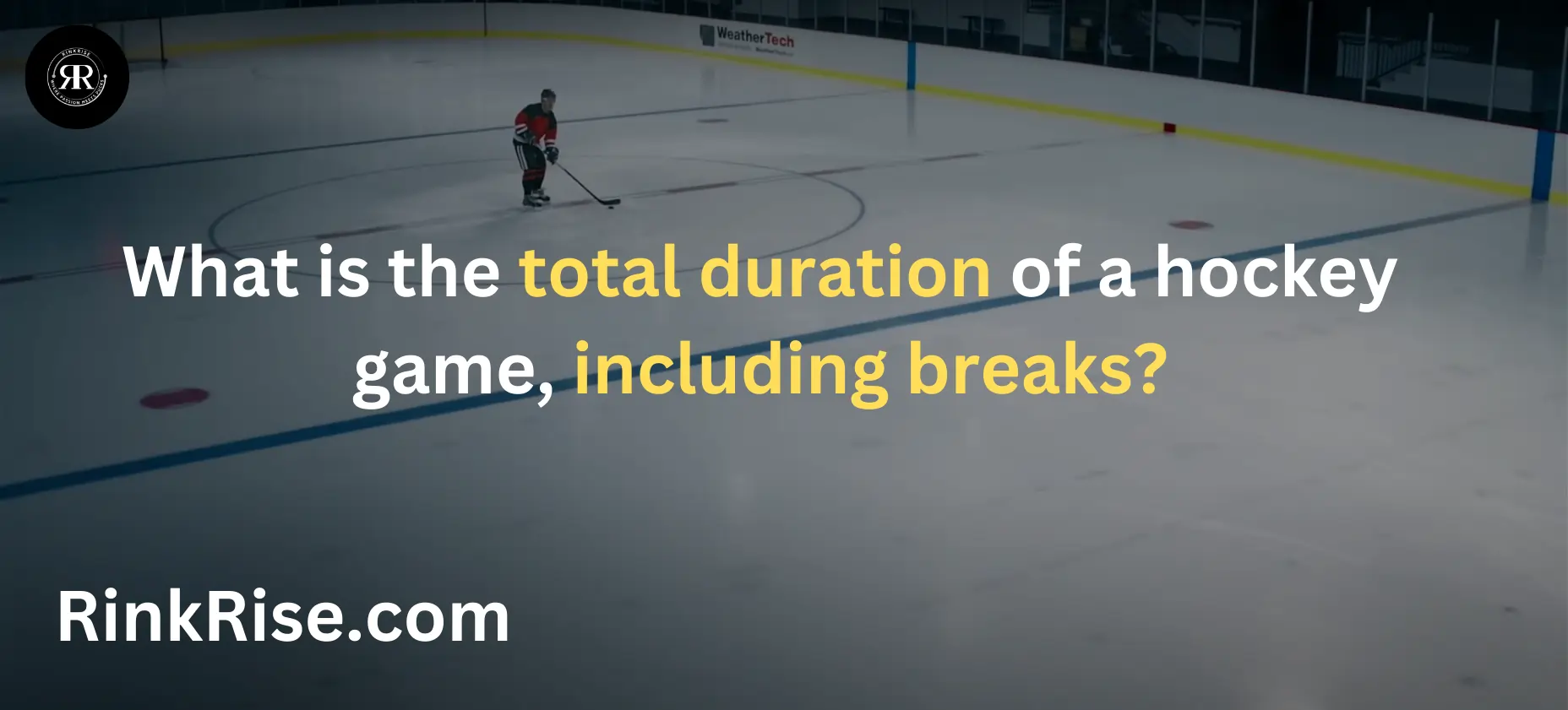The total duration of a hockey game, including breaks, is typically about 2 to 2.5 hours. A standard hockey game consists of three 20-minute periods, which totals 60 minutes of playing time. In addition, there are two 15-20 minute intermissions between periods, and additional time is needed for stoppages in play, such as penalties, goals, and injuries, as well as potential overtime and shootouts in some leagues.
Here are two related questions:
- How long does a professional ice hockey game last, including intermissions and stoppages?
- What is the total time commitment for attending a live hockey game, considering the game duration and breaks?
A typical hockey game lasts between two and three hours, factoring in breaks. However, several variables can influence this duration, including the level of play, penalties, and stoppages.
Here are five key points that affect the length of a hockey game:
1.Overview of NHL Game Duration
A typical NHL game is divided into three periods, each lasting twenty minutes, totaling sixty minutes of gameplay. However, including various stoppages, penalties, and intermissions, the duration of an average game often extends to about two hours and twenty-five minutes.
Understanding NHL Game Intervals
In the NHL, games are divided by two 17-minute break intervals. These pauses serve not only for ice maintenance but also provide teams an opportunity to regroup and strategize.
2.Exploring Differences in Game Duration: International Ice Hockey vs. NHL
International ice hockey matches typically feature three 20-minute periods. This structure can affect the total game time and the length of breaks between periods when compared to the NHL.
Influence of Penalties on Hockey Match Duration
The duration of a hockey match can be significantly impacted by penalties. When a player receives a penalty, they are temporarily removed from play and must sit in the penalty box. Depending on the severity of the infraction, penalties can last between two to five minutes, potentially extending the game’s overall length.
Extended Play in Hockey Matches
When a hockey match goes into overtime, it means the game is extended beyond the regular playing time. This usually happens when the score is tied at the end of the normal duration, known as a deadlock. During overtime, the match can be prolonged through one or more additional periods until a team scores, which breaks the tie.
3.Fundamentals of Hockey
Periods and Breaks
Hockey matches are divided into three periods, each lasting 20 minutes, making up a total of 60 minutes of gameplay.
Between these periods, there are two breaks that allow players to rest and plan their next moves. In the NHL, these breaks usually last 17-18 minutes, while in high school games, the breaks are typically 12 minutes long.
Comparison Between Ice Hockey and NHL Rules
In both amateur ice hockey and NHL games, teams play a standard duration of 60 minutes. However, there are distinct differences in the structure of the games.
When a match remains tied after regulation time, it moves into overtime, which varies depending on the competition level. In amateur ice hockey, overtime might include sudden-death periods lasting five minutes or shootouts. On the other hand, NHL matches employ a three-on-three format for five minutes followed by a shootout if the tie persists.
Moreover, interruptions such as icing, penalties, and resets of the puck extend the total time of the games. Typically, an NHL game stretches to about two and a half hours when accounting for these stoppages.

4.Typical Duration of an NHL Match
Average Duration
A standard NHL match is divided into three periods, each lasting 20 minutes, summing up to a total of 60 minutes of playtime.
Moreover, the game features two intermissions, each lasting 17 minutes and 30 seconds. These breaks serve for player recuperation and ice maintenance.
Incorporating these pauses and any commercial intervals, the complete duration of an NHL game typically ranges from approximately 2 hours and 15 minutes to 3 hours, influenced by various game-specific elements.
Influences on NHL Game Length
NHL games can vary in length due to several factors. Here are some key influences:
Overtime and Shootouts: If a game is tied after the regular three periods, it may extend into a five-minute overtime or a shootout, typically adding about 10 minutes to the game.
Penalties and Stoppages: Actions like penalties and offside calls interrupt the game. Referees are crucial in managing these interruptions and maintaining the game’s pace.
Commercial Breaks: Commercial intervals are standard in NHL games and contribute to the total duration.
Coach’s Challenges and Video Reviews: Situations such as goalie interference or potential offsides can lead to video reviews, which may prolong the game as decisions are made.
Scheduling and Timing: The scheduling of games, including the start time and day, as well as any pre-game or post-game activities, can also affect game length.
The NHL strives to optimize game lengths to ensure they are enjoyable yet fit within allocated broadcast times, accommodating fans and networks alike. Variations in duration are also noticeable in amateur leagues or non-professional hockey leagues, but the NHL generally follows a consistent format to manage game durations effectively.
Read more: Hockey’s Tiebreaker Rules: Can You Tie or Will There Be Overtime?
5.Overtime Rules During the Regular Season
In the NHL regular season, if the score is tied at the end of the regular playing time, the game advances to a 5-minute sudden-death overtime, played with 3 players aside, not counting goalies.
Should the overtime end without any goals, the game is decided by a shootout.

Key aspects of the regular season overtime include:
- Penalties from the regular period extend into the overtime
- Goalies may be swapped out during breaks
- Each team may utilize a 30-second timeout during overtime, provided it wasn’t used in regulation
Overtime Regulations in NHL Playoffs
During the NHL playoffs, the approach to overtime is distinct from the regular season protocol. In the event of a tie at the end of the regular play, the game extends into additional 20-minute segments of 5-on-5 action. These periods persist until a team scores, instantly ending the game with a sudden-death win.
Significant features of this playoff overtime format are:
- Every overtime period lasts a full 20 minutes.
- The match continues until a winner is determined.
- Teams exchange ends following each overtime period.
- There are no permitted timeouts during overtime.
The absence of a shootout in playoff overtimes adds to the drama, making the Stanley Cup playoffs home to some of the most prolonged and intense matches in NHL history. Games can extend through multiple overtime sessions before a decisive goal is made.d and a winner is determined, as seen in the NHL’s longest playoff games.
Preparation and Recovery in Hockey
In hockey, preparation before the game and recovery afterward are crucial for athletes. Players from both teams engage in warm-up exercises such as stretching and skating drills before the game starts.
This preparation is essential for players, including goaltenders and skaters, to ready themselves for the fast-paced and intense nature of hockey.
These warm-up routines, lasting approximately 15-30 minutes, might vary across different leagues like major junior hockey or college hockey. Following the conclusion of a match, players partake in cool-down exercises aimed at reducing injury risk and aiding muscle recovery.
Hand-eye coordination and sharp focus are vital as hockey involves rapid movements and quick action. Pre-game warm-ups are integral in bringing players to an optimal level of readiness and excitement for the game.
Game Dynamics in Hockey: Impact of Injuries, Penalties, and Broadcasts
Injuries
Injuries in hockey are an inevitable consequence due to the sport’s physical nature and frequent contact. If a player gets hurt during the match, the game may halt to allow for immediate medical assistance and, if needed, to safely escort the player off the ice. Such interruptions can notably extend the length of the game, depending on the injury’s severity.

Penalties
Penalties also influence how long a hockey game might last. Minor offenses like tripping or hooking lead to a two-minute penalty, granting the other team a power play chance. More serious offenses, such as fighting, can result in five-minute penalties for each player involved. The variability in penalties, influenced by the teams’ strategies and gameplay, can result in prolonged stoppages and an extended game duration.
broadcasters
Moreover, broadcasters often use the stoppages from injuries and penalties to run commercial breaks, adding further delays for viewers. These ads are crucial for generating revenue for the teams and the NHL. Additionally, referees might use this time to review controversial plays or goals using replay footage, which can further lengthen the game.
Despite these disruptions, the unpredictable duration of a hockey game does little to dampen its excitement and intensity. Fans and players alike remain drawn to the sport, ensuring that hockey remains a captivating experience for everyone involved.
Overview of Hockey Game Timings
NHL hockey matches are structured into three 20-minute periods, amounting to 60 minutes of actual playtime. Nevertheless, the total duration typically extends between two hours and 15 minutes to three hours. This extension is due to 17-minute and 30-second intermissions, alongside various stoppages and TV breaks.
The 60-minute playtime regulation is also observed in other hockey leagues like the AHL, ECHL, KHL, WHL, and OHL.
Several factors, including stoppages for ice maintenance and overtime, can further alter the length of a game. The record for the longest hockey game, which occurred in 1936, featured an impressive 176 minutes and 30 seconds of playtime. This historic match between the Detroit Red Wings and the Montreal Maroons extended through six overtime periods until the winning goal was scored by Detroit.
In essence, while the base playtime for hockey games is set at 60 minutes, various external influences can stretch the overall game time to around two and a half to three hours.
FAQ’s: the total duration of a hockey game
What is the length of a standard hockey game?
The official length of a standard hockey game, according to the International Hockey Federation, is 60 minutes. Prior to 2019, games were typically 70 minutes long. In the NHL, the game is divided into three 20-minute periods, totaling 60 minutes of playtime.
How long are the breaks in a hockey game?
Hockey matches consist of three 20-minute periods. Between the first and second periods, as well as between the second and third periods, there are intermissions. In the NHL, each intermission is 18 minutes long, although this duration might be shorter in other leagues. Additionally, the NHL features a minimum of three media timeouts per period for commercial breaks.
How many intermissions are there in a hockey game?
In the NHL, there are two intermissions, each lasting 17 minutes, separating the three periods of the game.
How long does each period last in a hockey game?
Each period in a hockey game lasts for 20 minutes. The entire match consists of three such periods. Between each period, players take a 15-minute intermission. If the game ends in a tie and the rules require it, an overtime period is played as a tiebreaker.
What is the term for a pause in a hockey game?
A break in hockey, often used for resurfacing the ice, is known as an intermission. These breaks typically last 15 minutes and occur between the three 20-minute periods of the game.
What does ‘fast break’ mean in hockey?
A fast break in hockey occurs when a player bypasses the defense, gaining the opportunity to move directly towards the goal without any obstructions. This term is also associated with a major penalty known as Butt Ending, which happens when a player strikes an opponent using the end of the stick’s shaft.
How many periods are in a hockey game?
Hockey matches are divided into three periods, each lasting 20 minutes. Teams have a 17-minute break between each period to strategize and rest. Overall, a typical NHL game lasts about 2.5 hours.



